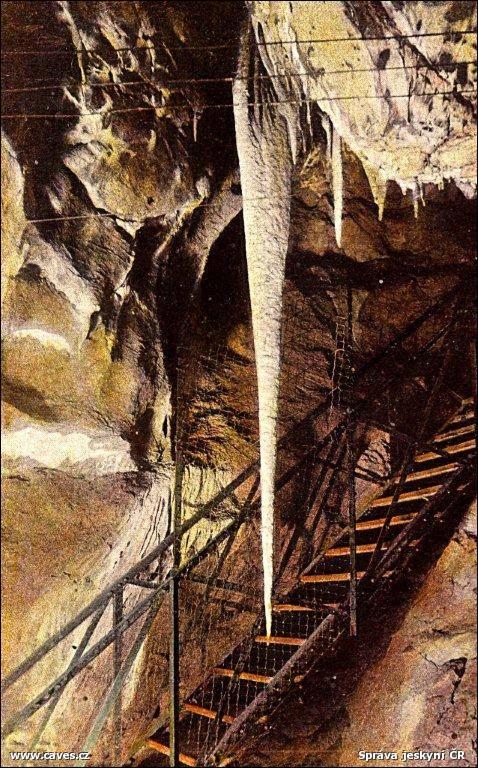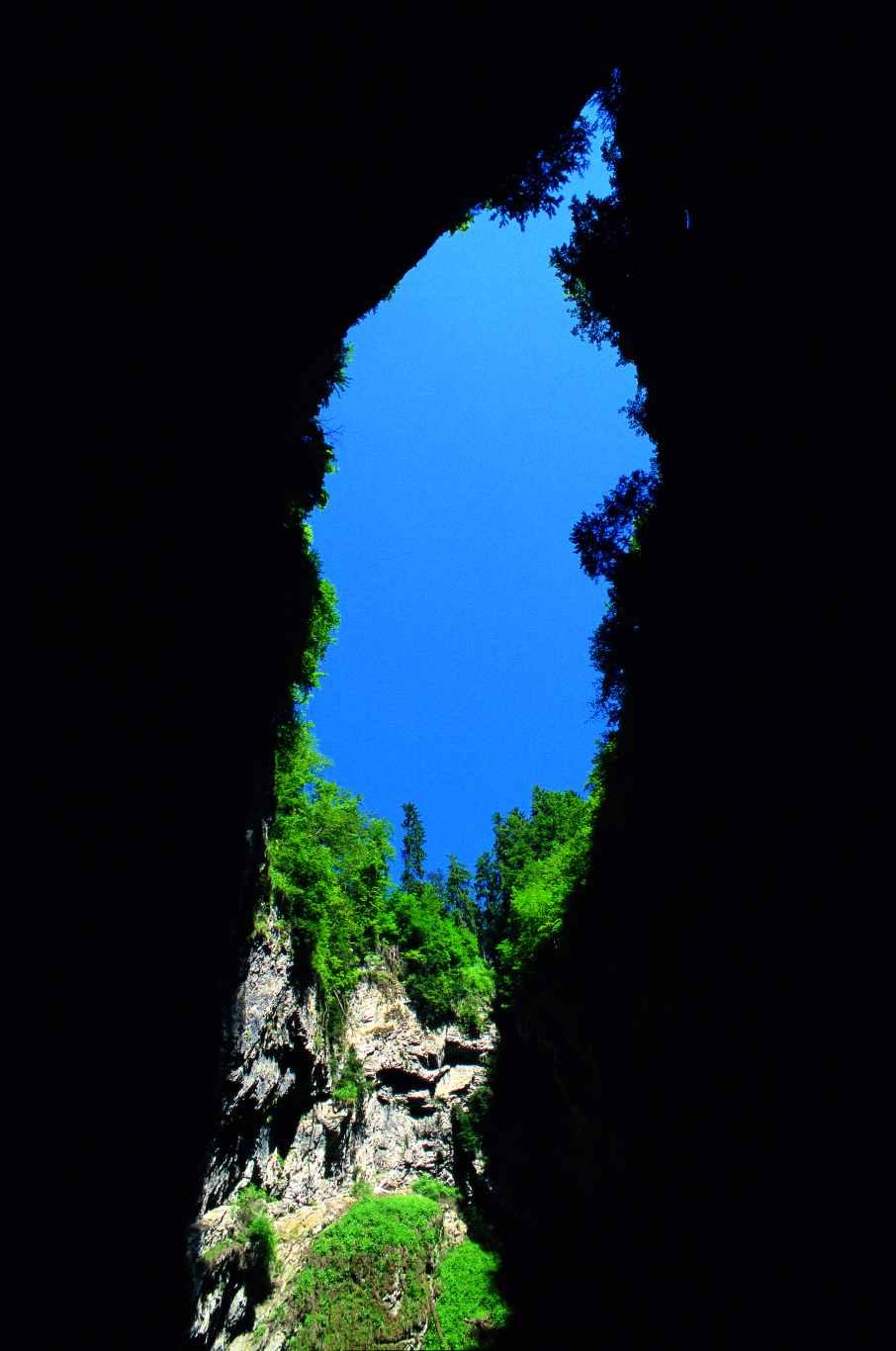Punkva (Punkevní) Caves - Characteristics

MORAVIAN KARST
It is the largest and the most important karst area in the Czech Republic. It’s situated north of Brno and with its area over 100 km2 of Devonian limestones (width 3 - 5 km, length 25 km) is a part of the Drahany Highlands. It’s divided into the northern territory - the Punkva system, the central part - Křtinský and Jedovnický Brooks and the southern territory formed by the Říčka system. This division is from the hydrographic point of view.
PUNKVA CAVES
-
They are situated in the northern part of the Moravian Karst in the Canyon of Pustý Žleb in the national natural reservation of the Punkva in the protected landscape area called the Moravian Karst
-
They are the spring up branch of the Punkva hydrographic system, the part of the largest and the longest cave system in the Czech Republic - Amateur´s Cave (its length = 33 km). The world-known Macocha Abyss leads into the Punkva Caves. Macocha Abyss is 187,5 m deep, 138,5 m is its dry part.
-
Punkva Caves consist of the dry part and the water part. Dry parts were discovered gradually in 1909 - 1914, the water part and its surrounded dry areas were made accessible to tourists in 1920 - 1933, in some parts discoveries still continue.
-
The total length of all known passages is 4 km with a denivelation of over 187 m.
-
The dry part of the caves has been open to the public already since 1909. The present area of the system has been open to the public since 1933. The boat cruise has been in operation since 1920. The present tourist route is 1250 m long.
-
Tour duration - 1 hour.
-
Air temperature - 7 -8 °C (46°F)
-
Relative humidity - about 99 %

The development of the Punkva caves
Over 1100 caves are recorted in the Moravian Karst. They came into existence gradually by erosion and some corrosive activities of precipitated water and its underground streams in the tectonic interrupted and relatively soluable layers of limestone. The Punkva caves form the spring-up and paleospring-up part of the hydro-graphic system of the Punkva river. Its water sources sink down in the draft areas near Holštějn and Sloup and flow through the longest cave system of the Czech Republic - Amateur cave where there is their confluence. The Punkva river springs up then on the floor of Macocha Abyss and flows through the active branches of the Punkva caves as far as 120 m of the deep karst canyon - Pustý žleb (Waste ditch). The other parts of the caves are dry on the standard water conditious.
The Punkva caves belong among younger caves from the view of their development. In the previous phases the underground Punkva flew away through paleosprings to Suchý žleb (Dry ditch) (it is the present Kateřina’s cave), before that it flew, maybe, even to Jedovnice basin.
The Punkva caves originated on several floors, that is why crashing of ceilings and fallings arose on the crossing of the geologival disorders. This way the huge Macocha abyss or the tall Reichenbach’s cathedral came into existence. 80 m tall chimneys made by vertical water influence are very typical there. The tunnel corridor is a pretty example of the huge pressure - eroded pipe. The geomorphological place of interest in the Punkva caves is underground flute cracks made by intensive water flowing down on the sheer walls.

MACOCHA ABYSS –187,5 M
The monumenthal part of the Punkva caves is the world-known Macocha abyss. Its depth of 138,5 m to the surface of Dolní jezírko (Down small lake) is accompanied with its fascinating dimensions - 174x76 metres. The abyss of so-called „light-hole“ type arose by gradual falling of huge cave space with several floors. The abyss continues under the surface of Down small lake to the proved total depth of 187,5 m.
The first written note about the abyss comes from 1663 and the first historically proved descent to its floor was made from the spot of the present lower landing stage by the minor Lazarus Shopper in 1723.
In 1772 Shopper’s descent was described in the manuscript by Josef Melnický: “…a lot of nobility gathered on May 25 in the woods near the mentioned lowlands. All officials, foresters and various farmers from nearby villages were present there. They were asked who would be able to drop down the lowlands. After long thinking over a farmer from Vilémovice dropped down on the peg. He was followed by Lazarus on the rope - but secretly (because there were doubts among the nobility whether the cleric should be dropped down).
Some officials made sure about following the cleric Lazarus but they lost their courage when seeing the abyss. The only batler Johann Zouhard dropped down. The two of them walked round the abyss and described it. In relatively plain forest one can hit a horrible place which is so deep that you can’t see the floor. On your left you can walk down and can drop down the half of abyss depth. It’s possible when you hold the trees and roots. Then the rope for dropping down is turned round the tree.
Dropping down on the peg you must keep attention of your eyes because the clay is sandy and soft and it falls on the person who is dropping down. Then you drop down slowly without touching rocks. You can see around wild rocks and holes and before you are on your feet the untied rope is 32 six feet long…“
Since then a lot of research workers have dropped down to the floor of the abyss. The first scientific expedition concentrated on mapping and it was led by engineer Karel Rudzinský in 1784.
Proffesor Karel Absolon made wide research at the beginning of 20-th century. He organized several descents of groups of research workers who stayed in the abyss for several days. Professor Absolon investigated Macocha floor and gradually he discovered the Punkva caves and Macocha water cathedrals - areas where the river Punkva flows through. He used the iron ladder 2 700 kg heavy and 80 m long constructed for making research work easier.
Today it’s possible to have a look at Macocha depth from two sightseeing boards accessible from the tourist chalet or from the pathway leading from the Punkva caves.
Since 1914 Macocha floor is an integral part of a visit to the Punkva caves. The pavement for visitors is safe now and goes under the rock overhangs and the huge portal of the cave cathedral. Both of the two lakes - Upper, tributary one (13 m deep) and Lower, running off - one (49 m deep) have remarkable water state. Their surfaces waver and during extreme floods their levels are about some metres higher and the abyss floor is flooded. Extreme water amount comes from Amateur cave. The inverse microclimate of the abyss floor with the constant low temperature and high dampness formed some special vegetation of race and endangered species of plants.
Macocha abyss - basic historical dates:
1. written note: M. A. Vigsius 1663
1. historically proved descent to the floor: Lazarus Shopper 1723
1. scientific expedition: engineer Karel Rudzinský 1784, he draw the first vertical cross-section of the abyss
Next imporant descents: Hugo Salm 1808, Dr. Jindřich Wankel 1856, Eduard H. von Hankenstein 1856, Dr. Martin Kříž 1864, Othmar Skala 1889, Adolf Podroužek 1894, Florian Koudelka 1898, prof. Karel Absolon 1901, 1903, 1905, 1907, 1909
The tradition of special craft - so called takers the suicides out of Macocha was in existence to 1914.
The Legend about Machocha
Once upon a time there lived a widower with his small son Janíček in the nearby village called Vilémovice. When he got married for the second time, he brought a new mother to his son Janíček and later a new baby was born. While Janíček was a healthy boy his younger brother was constantly ill. Janíček’s step-mother hated her step-son and took advice from an old woman - herbalist. She foretold her if Janíček would die her son would get well.
Step-mother elicited Janíček to the edge of the abyss. She wanted him to pick berries there and she threw Janíček down. But luckily the boy caught the tree branches and called for help. Some wood-cutters heard his calling and saved him by means of ropes.
Meanwhile step-mother came back home and found a dead-body of her own son. She took him and returned to the abyss beeing half-mad and jumped down. Since then the abyss had been called after step-mother - Macocha. (but in Czech step-mother is exactly macecha).